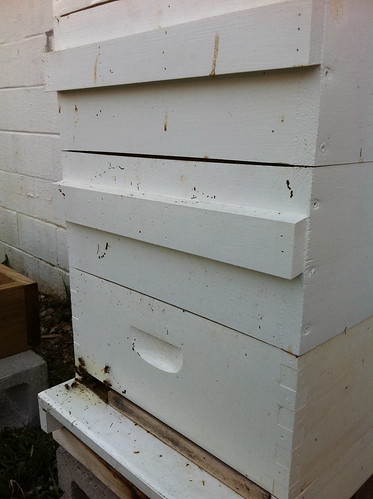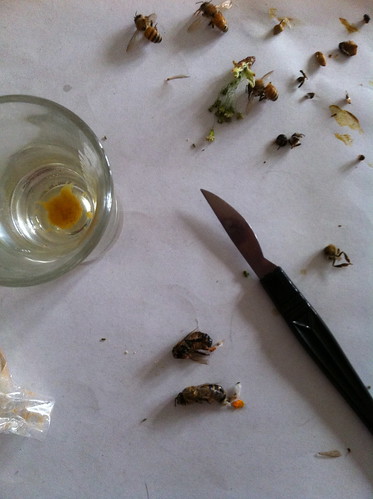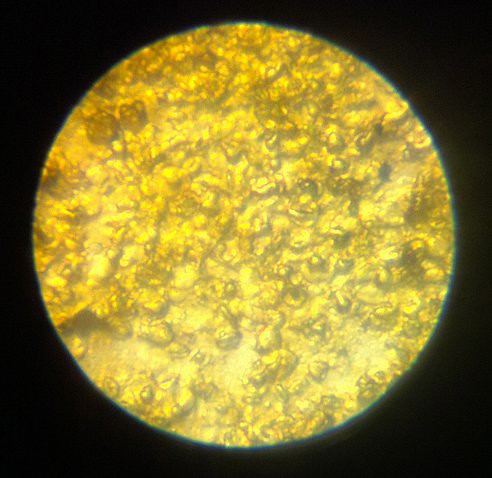Still no packages. We're really trying to maintain our composure, but after two weeks, our excitement has fermented into anxiety, and we're wondering if we need to form a back-up plan.
Of course, one way of getting your mind off the worry is to just walk back to the beeyard and sit for a while. This weekend's weather finally afforded us this opportunity again. We found evidence that the bees were just as fed up with the cold as we were. They were BUSY. And packing in every color of pollen.
 |
| streaking on columbia |
We're still learning about this bee-physiology stuff, but you could easily see by the streak marks on Columbia that these cleansing flights were a long time coming. One thing you always worry about with streaking is Nosema. Nosema is essentially a severe dysentery caused by a fungus that's been charged as a possible accomplice in Colony Collapse Disorder. Some beekeepers suggest that you preemptively treat your hives for Nosema by applying an antibiotic. We do not wish to do this, though we did have to treat Ada last year when we found she had Nosema (it's actually quite common). To be safe, though, we didn't pull honey from her.
 |
| make-shift laboratory! |
The next stage is pretty murky. You can macerate, blend, or even use a coffee grinder, but you have to make a bee paste to analyze under the microscope. The Nosema fungus is in the gut and this is a straightforward way to see inside there.
We haven't done this test for the bees this year. Honestly, we're just hoping that they've been cooped up for too long and just had to accommodate a lot of traffic at once.
 |
| bee poo 200x |
So then what? Under the microscope it goes! This isn't the proper test for Nosema or any other pathogen that we are aware of, just another way of seeing things.
All for now. Fingers crossed for our packages, for more warm weather, and healthy bee bellies.

No comments:
Post a Comment